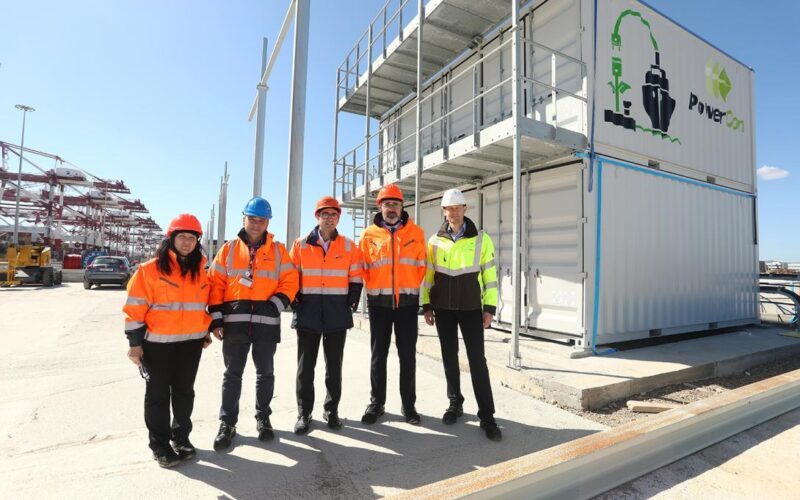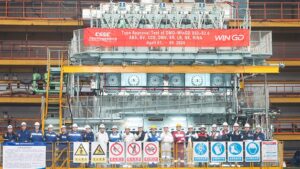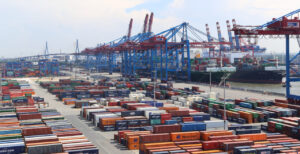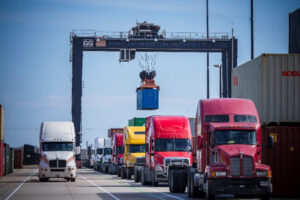The Port of Barcelona has received the first Onshore Power Supply (OPS) substation of the future connection network for ships that is being rolled out with the Nexigen project.
It is the centrepiece of what will be the first OPS system to supply electricity to container ships arriving at the port, allowing them to stop their engines while docked, thereby reducing the emissions they generate.
The OPS substation comprises six modules assembled in Denmark by the PowerCon company, awarded the contract to install the system in ‘turnkey’ format, and will allow up to two container ships to be connected simultaneously.
The arrival of this element represents a milestone for the Hutchison Ports BEST terminal wharf electrification project, where the works on both the civil engineering and electrical network and the rolling out of the cables to the wharf had already been performed, coinciding with the terminal enlargement works.
The OPS connection will be completed over the next four months with the arrival of the equipment to be installed wharfside to connect the vessels and all necessary checks and tests will be performed. If all goes as planned, the aim is to start supplying ships with clean energy certified as 100 per cent renewable as of July, the port reported.
In parallel to these works, the Port of Barcelona is holding meetings with several shipping companies to plan the arrival and connection of ships that are already equipped with OPS connections.
The BEST terminal OPS and the one being built at the Ferry Terminal will in fact function as a pilot test, making it possible to gather data and information on their operation to optimise the roll-out of the rest of the OPS as well as the medium-voltage network that will supply them with renewable electricity.
The Nexigen project is one of the Port of Barcelona’s big bets to halve CO2 emissions from port operations by 2030 and become a carbon-neutral port by 2050.
Specifically, electrifying the main wharves at the Port of Barcelona will reportedly make it possible to eliminate 66,000 tonnes of CO2 and 1,234 tonnes of NOx from the emissions generated by port activity.
READ: Port of Barcelona ZAL readies Europe’s largest rooftop photovoltaic park
“The arrival of the OPS of the BEST terminal is a very important milestone in the roll-out of the Nexigen project,” pointed out the President of the Port of Barcelona, Lluís Salvadó.
“It is the result of years of work to set up the first system of this type in southern Europe and the first part of a network that will make it possible to significantly reduce the emissions generated by port activity.”









